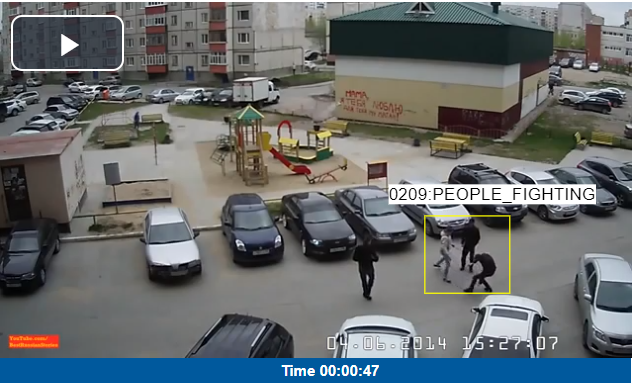Behaviors like people fighting or having an argument can be dangerous to an end user organization and should be detected and dealt with as quickly as possible. To that end, artificial intelligence and deep learning can be a big enhancer for behavior recognition, helping the system recognize different types of behavior with greater accuracy and precision.
Behavior recognition has become more important than ever in security. Behaviors like people fighting or having an argument can be dangerous to an end user organization and should be detected and dealt with as quickly as possible. To that end, artificial intelligence and deep learning can be a big enhancer for behavior recognition, helping the system recognize different types of behavior with greater accuracy and precision.
That was the point raised by Maya Scheyer, Head of Business Development at
viisights, which has developed various deep learning-based behavior recognition solutions. One of them is Discovery Experiencer, which is equipped with advanced analytics capabilities including violence recognition, suspicious activity recognition and crowd management that are useful in safe and smart cities, smart businesses, critical infrastructures, transportation hubs, border security and more. Separately, viisights has also unveiled Central Intelligent Motion Detection, the first AI-based central motion detector which is installed as second-layer analytics in command and control centers for reducing false alerts originated from edge motion detector.
According to Scheyer, what makes viisights’ solution unique is its ability to extract behavioral and contextual actionable insights from real-time video streaming. “Our holistic analysis engine understands video content using a top-down and time-based approach. The engine is trained with video clips that include a tagged behavior and context, for example scenes, events, actions and location types. Each of those classes has start and end time of their appearance in the clip. Our unique IP is in the automatic features extraction being done by the engine for learning the required behavior and context and in recognizing accurately within near real-time latency such behavior and context during runtime. An additional big advantage is the relatively small amount of content or video clips that is required for introducing a new class – several dozen up to few hundreds, vs. object recognition that requires thousands of tagged images,” she said.
“The required hardware today is based on Nvidia GPU, and we are also working on a very interesting FPGA solution,” she added. “No doubt that one of the goals for massive adoption of machine learning technology used for vision analysis would be to increase the hardware efficiency and reduce cost per stream. New technology software vendors such as viisights along with chipmakers like Nvidia and Intel put this effort as top priority.”
AI makes it all possible
 Provided by viisights
Provided by viisights
According to Scheyer, the market potential for her company’s solution is not to be ignored. “The video analytics market for security and surveillance was in a sleep mode for many years due to technology and product limitations. The demand for viisights products is coming from the drivers that push the market from US$2.6 billion in 2017 to $11.7 billion in 2022, according to recent market research,” she said. “Drivers include demand for actionable insights, government investments in new technologies for enhancing public safety and market requirements for high reliability, or less false alarms.”
She noted that without AI and deep learning, it would be impossible to achieve the functionality and performance their product offers.
“How can one describe a complex behavior like people fighting in traditional algorithmic way? It is practically impossible. As deep learning is based on examples, it is feasible to define the behaviors of interest by providing relevant video examples. Our system learns from video examples that describe a behavior/situation and not from discrete images,” she said. “Even if one can describe in traditional way a certain behavior – it will take significant amount of development time per each behavior in order to cover all possible scenarios. Therefore, from any practical point of view, a product will be able to support only a limited set of behaviors. The only way to scale to large number of behaviors is by deep learning.”